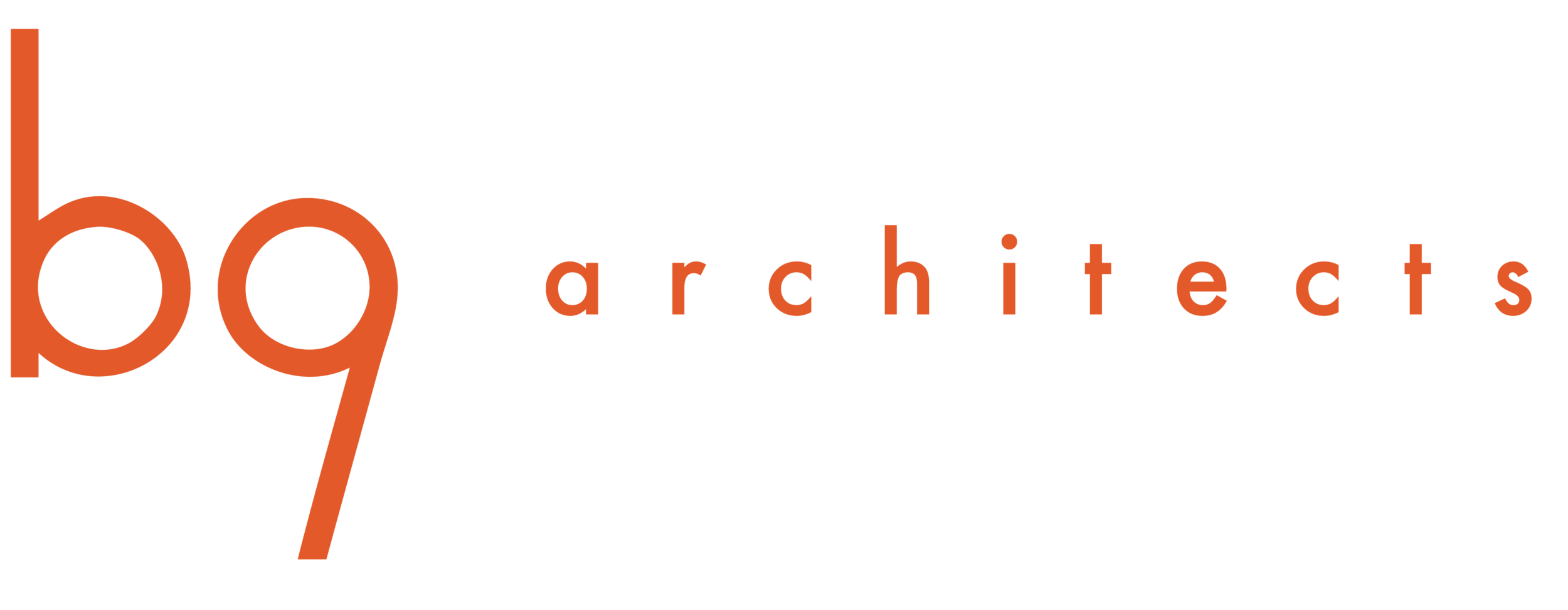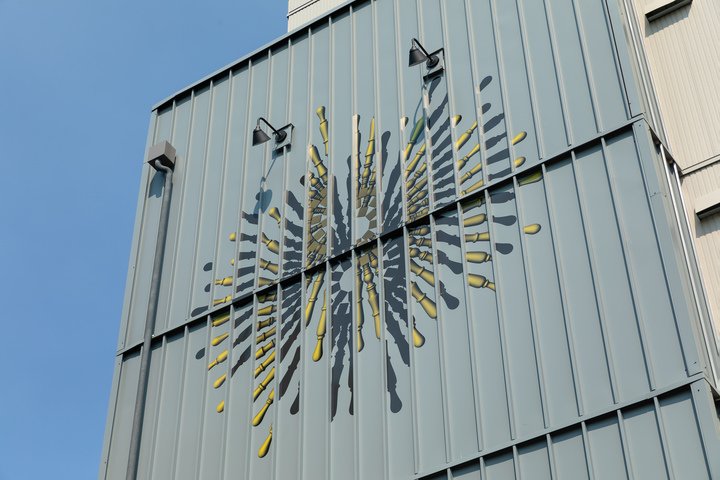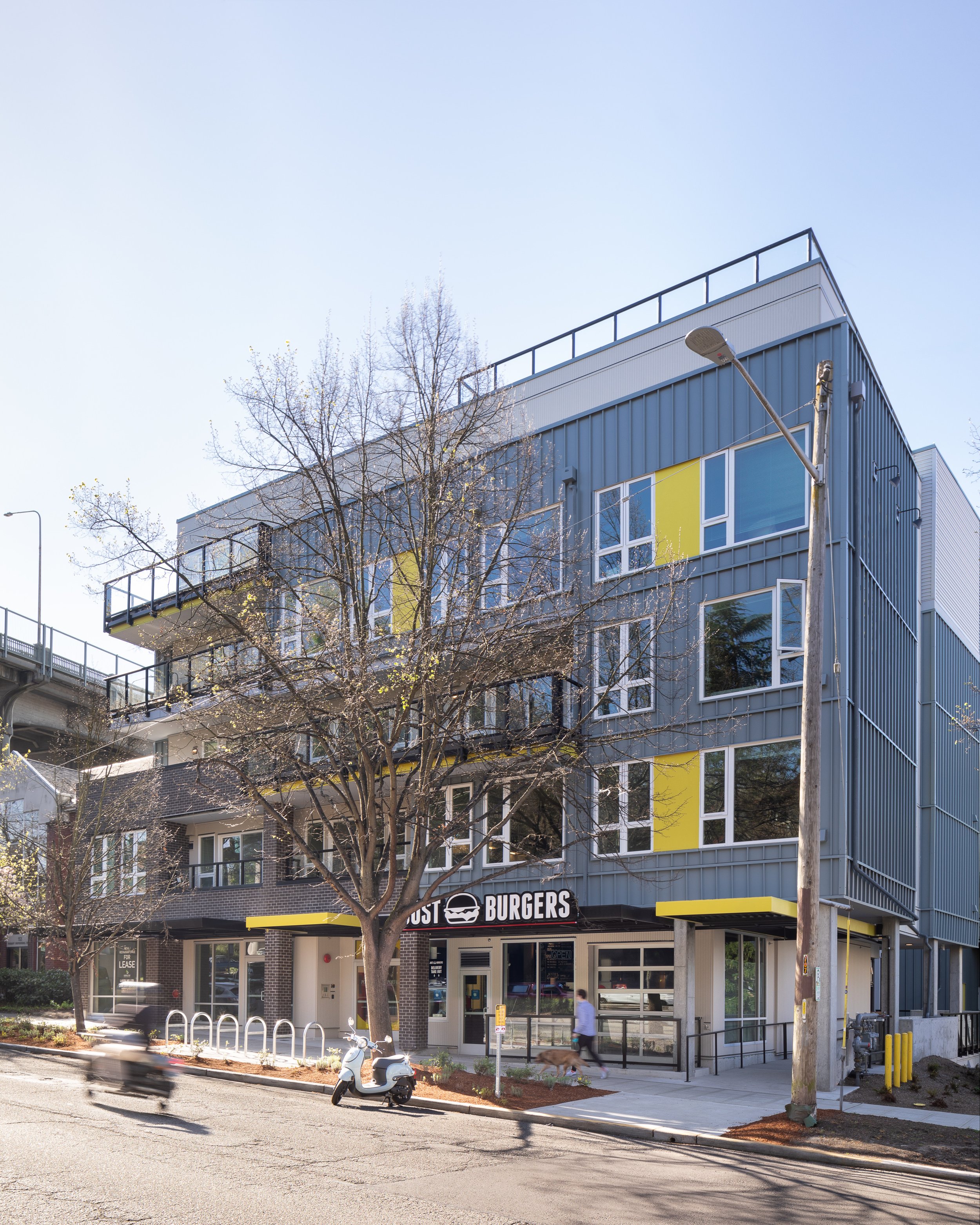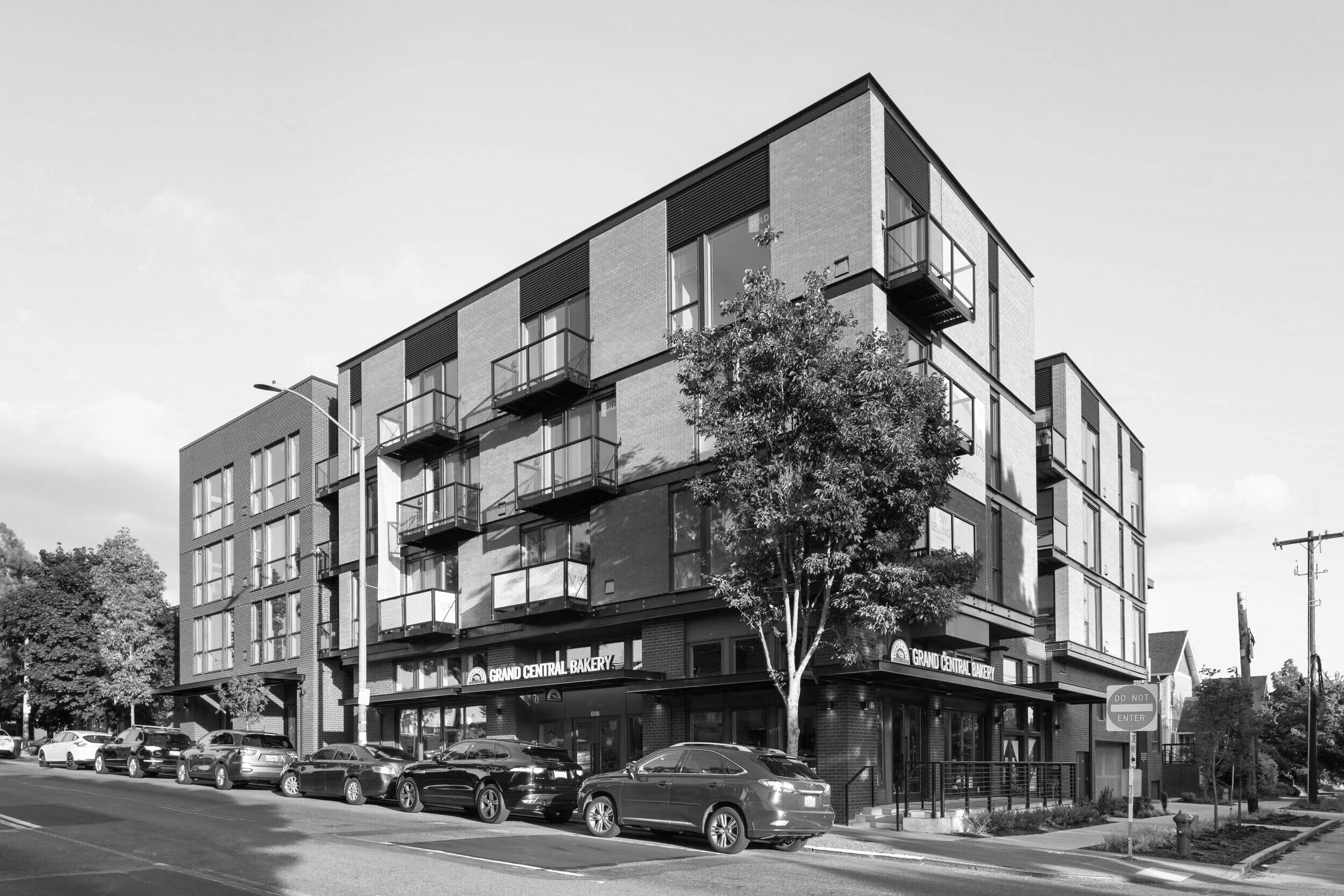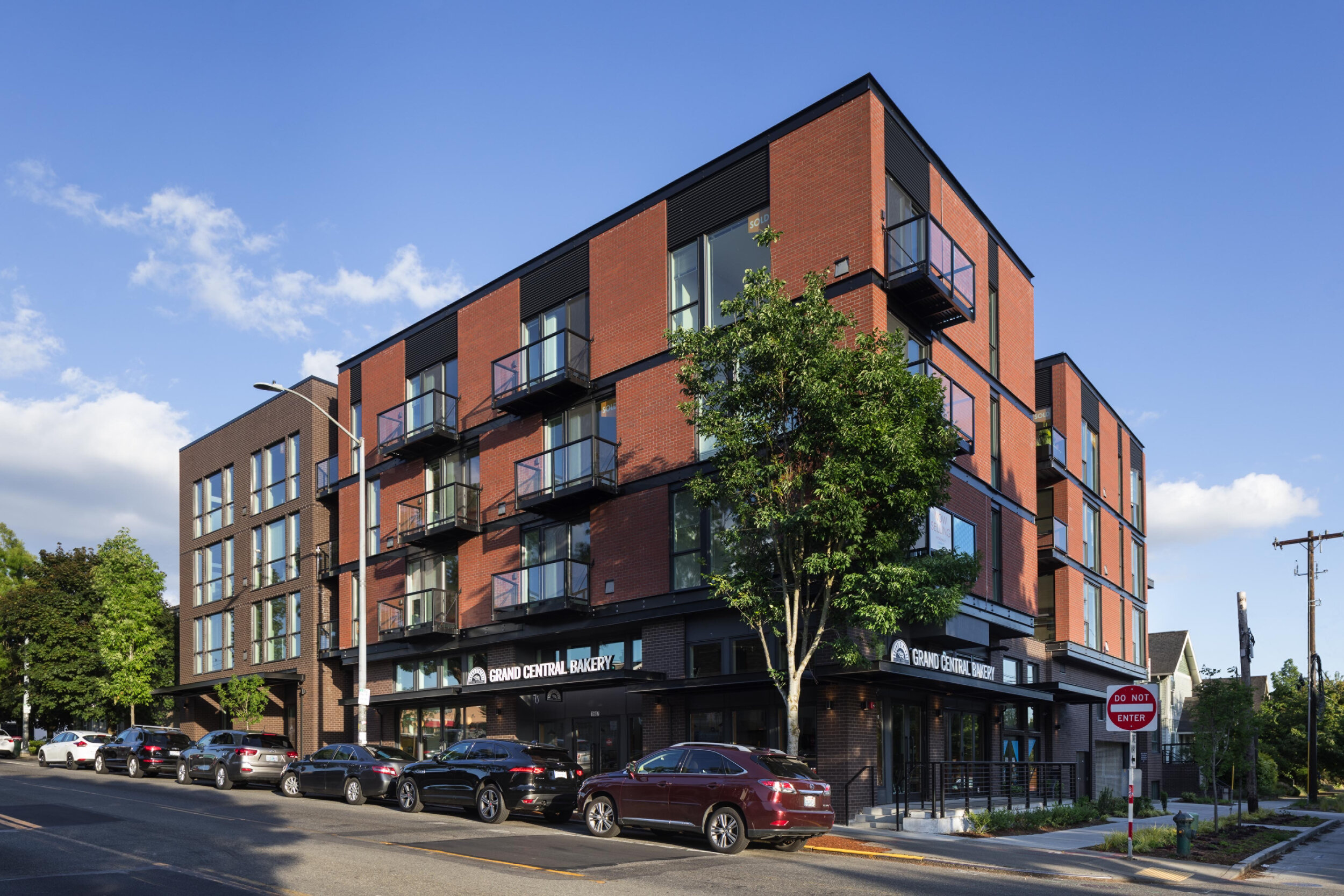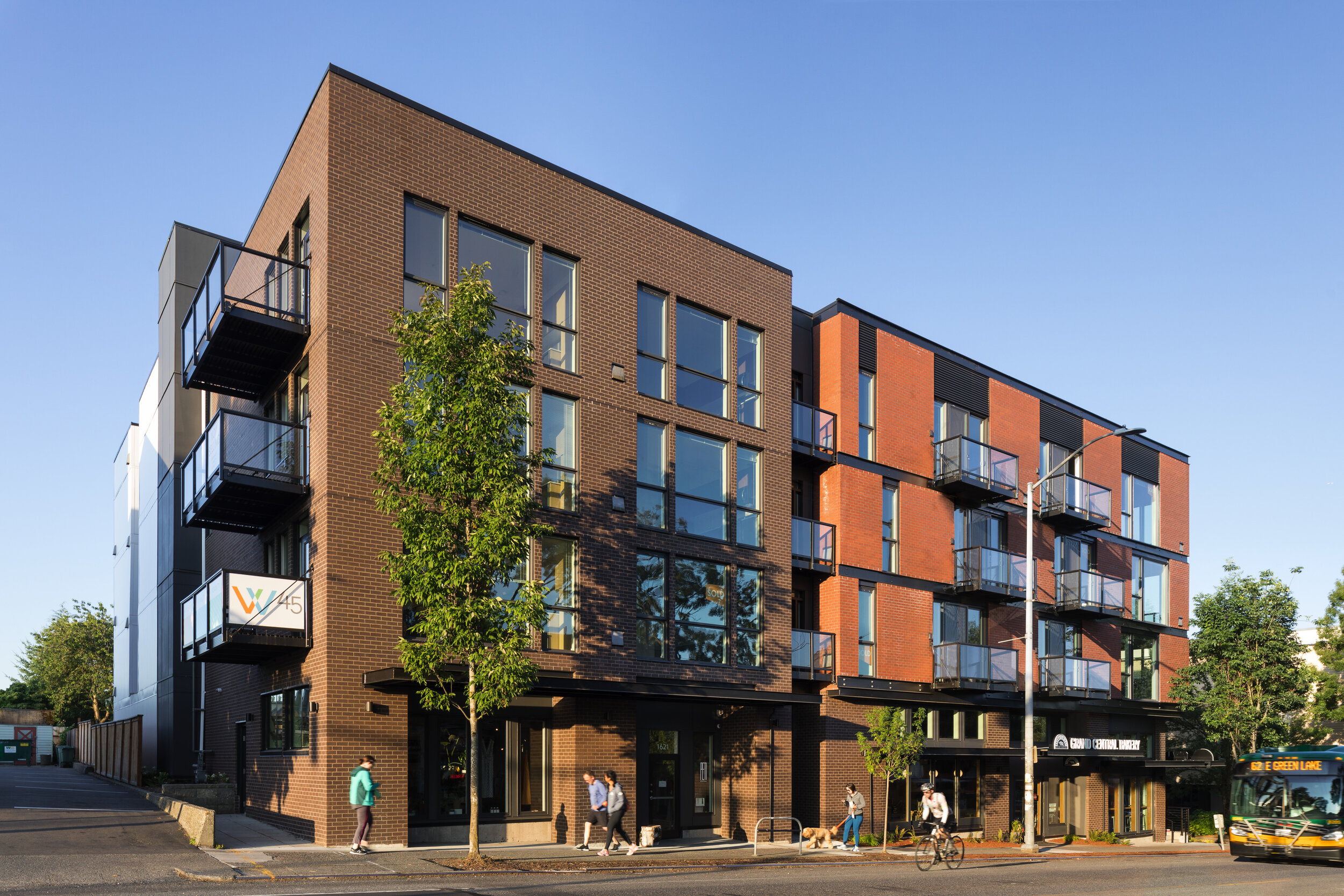As the first apartment project b9 architects was hired to do, The Portal in Fremont holds a special significance for the firm. From the outset, the client’s strategy included petitioning the City of Seattle for a site specific contract rezone, a process through which the City Planning Department, and finally the City Council could vote to change the parcel’s land use designation based on the development’s proposed design. In undergoing this process and extending the permit timeline, the project was able to gain floor area and height above the limit of its original zone requirements. Working through this process would also make this one of b9 architects’ most collaborative projects to date.
From the beginning of the project, the team wanted to design a building that would feel rooted in the neighborhood. Through the Contract Rezone and Design Review process, b9 architects met with community members and organizations to hear their needs from the new project, and collaborate on the final design. Fremont, known for its eclecticism, is home to a number of famous public art spaces and events. Within walking distance of Portal, are the famous Fremont Troll, the Waiting for the Interurban statue and pergola, and the statue of Lenin. Annually the Fremont Solstice parade runs along 36th Avenue in Fremont featuring groups of nude, body painted cyclists. To match the community oriented spirit of the neighborhood, Portal was designed with a porous commercial space at street level. A restaurant space with roll up garage doors facing the street, and the building's interior courtyard allows customers and residents the ability to pour out into each space, blurring the boundaries between public and private space. This initial strategy carried through the entire Contract Rezone and collaborative processes with the community.
In general, a contract rezone through the City of Seattle would suit a larger development of aggregated parcels, covering perhaps a full block or more, and requiring design presentations to the neighborhood Design Review Board. If approved there, the strategy would be presented to the Seattle Hearing Examiner, who produces a report and recommendation to the Seattle City Council for approval. For Fremont Portal, the team committed early-on to undergo this process for this one 8,000 sq ft lot by itself. On a slope near North Lake Union, the site is adjacent to the historic landmark building of the Fremont Branch of the Seattle Public Library, and the historic George Washington Memorial Bridge (Aurora Bridge). To achieve this ambitious goal, the project team began several collaborative relationships; land use lawyer Josh Brower, joined the process early in the design review process to guide the team, while Principal Brad Khouri and architect Brian Johnson began a conversation with the Seattle Public Library and the Fremont Neighborhood Council to secure their support for the project.
The Seattle Department of Neighborhoods oversees all buildings with historic landmark status. As part of the review, DON, wanting to ensure that the building proposal through the Contract Rezone did not obstruct access to natural daylight, requested a shadow study to specifically examine how a building at an increased height would impact the three Reading Room windows on the landmark structure’s east facade. Fortunately, b9 had determined early in the project to create an internal courtyard that carved away building mass creating a void adjacent to the historic windows. After creating a shadow study in our BIM software, ArchiCAD, b9 architects chose to remove a unit from the top floor of the south west corner of the project to ensure the library kept its access to natural light. This move also created an opportunity for the project: to create a shared resident patio space on the fifth floor.
A second collaborator on the Portal, the Fremont Neighborhood Council was an important organization for the contract rezone process. Their support of the project would go a long way in securing approval from the Design Review Board, and other entitlement processes within the City of Seattle. The team reached out to the group early for their input and guidance on the project. In the conversation, the Fremont Neighborhood Council leadership pushed for more two bedroom units. In the initial Early Design Guidance meeting, the Design Review board asked for the proposed bulk and mass be reduced significantly along its north side, which resulted in the project losing sevenn of the eight proposed two bedroom units. After coordinating the reduction with the Design Review board with the ideal unit mix from the Fremont Neighborhood Council, the team found four more two bedroom units, while only reducing the total number of units by two, from 56 units to 54 units. For comparison, the code compliant version without the requested Contract Rezone would have resulted in 44 units. Per the Fremont Neighborhood Council’s recommendations the project went further in creating transparent spaces to combine the commercial and residential uses. Large windows to each commercial space flank the residential lobby creating a full line of sight through each space.
The Neighborhood Council also worked with the team to integrate public art installations with the project. The team reached out to 4Culture, a Seattle-based art advocacy group to orchestrate a search for public artists for the project, from Seattle and beyond. Local artist Caroline Davis represented b9 architects in the search that selected Verda Alexander, a renowned Los Angeles interior designer. Inspired by Fremont, Alexander iterated on her theme “Portal”, which would carry on as the project’s namesake, to create two pieces of public art. With a desire for the art to be intrinsic to the building, rather than additional, Alexander worked with our design team to detail the building's siding, engraving the art directly into the sourced brick cladding. A second art piece, originally proposed as a glass mural attached to the project, became vinyl applied directly to metal siding to best resemble actual building cladding.
Thanks to a highly collaborative design process facilitated by the Contract Rezone, the Fremont Portal is an elegant addition to the eclectic Seattle neighborhood. Replacing traditional hallways, exterior walkways provide abundant light and open air on at least two sides of project units. A courtyard, privately managed, but publicly accessible exists at street level, abutted by the restaurant space, currently leased by Just Burgers, and the landscaping of the Fremont Branch Library. Shared community areas, including the central courtyard at street level, the shared balcony on the fifth floor, and a large roof deck provide outdoor space. The theme of community collaboration continues through the resident experience as a miniature p-patch in galvanized steel planter boxes on the roof provides residents a space to grow their own plants and vegetables. Fremont Portal exemplifies for b9 architects what can be accomplished in a truly collaborative process that benefits the neighborhood.
